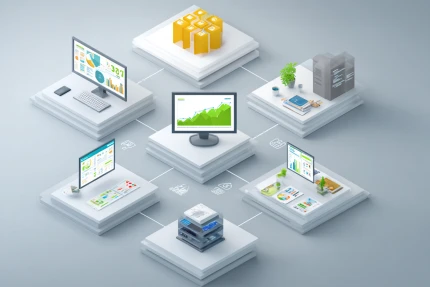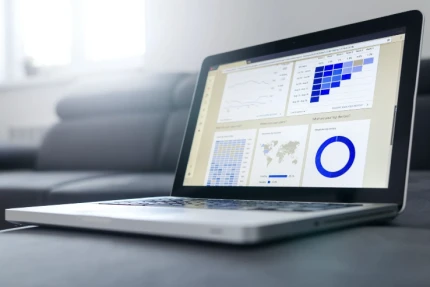Introduction: What is Sales Forecasting?
Sales forecasting is a vital tool to help businesses predict future sales as well as evaluate future sales performance. Using accurate revenue predictions, business stakeholders can improve strategic decision making.
Finance teams rely on accurate sales forecasting to determine budgets and ensure the company has a healthy cash runway. Meanwhile, customer success teams need sales forecasting in order to ensure there is enough headcount to support new customers. Finally, sales forecasts provide sales teams with transparency into how realistic sales targets are and the potential for quota attainment.
Who Is Responsible for Sales Forecasting?
Before we dive in, let’s be clear: forecasting is a team sport. Accurate sales forecasts require gathering and analyzing a lot of historical data to make assumptions about forward looking trends. As a result, while revenue leadership typically owns sales forecasting, they require additional input, support and analysis from others. This includes: sales managers, sales reps, the marketing team, the FP&A team and the revenue operations team.
What Are Common Sales Forecasting Methodologies?
There are several ways companies can run sales forecasting to gain a sense of future sales potential. Below are some of the most common sales forecasting methods B2B companies use to predict future sales.
Note that there is no one best forecasting method; in fact, many companies have multiple sales forecasts running in tandem.
Historical Forecasting Method
This method involves analyzing past sales data to identify trends and patterns that can help forecast future sales. Historical patterns provide insight into sales potential for the coming year, quarter, or month.
Pipeline Forecasting Method
This forecasting method involves a trend analysis, analyzing the sales pipeline to determine the likelihood of closing deals in progress. By examining each opportunity, sales leaders can estimate the probability of closing each deal and calculate future revenue.
Market Research Method
Market research involves analyzing external factors such as market trends, customer behavior, and competitive activity to forecast and estimate future sales. This method involves gathering data on market size, market share, and growth rates to get a sense for future sales potential.
Expert Opinion Method
This method involves seeking input from experts in the industry to gain insights into future trends and changes. Sales leaders can consult with experts such as industry analysts, consultants, and thought leaders to develop a more accurate sales forecast.
Regression Analysis Method
Regression analysis involves identifying relationships between various factors and sales outcomes. By analyzing the impact of factors such as marketing spend, pricing, and product features on sales, revenue teams can develop a more accurate forecast.
Intuitive Forecasting Method
Intuitive sales forecasting is a forecast method that relies on the intuition and experience of salespeople and sales management to predict sales. We recommend only using this method in when:
- Historical data is limited or unreliable
- There are significant changes in market conditions or customer behavior.
How to Create a Sales Forecast Most Accurately?
While there are several sales forecasting methodologies, and several forecasts could be running within a single company at a given point in time, the most accurate forecasts will take a blended approach to predict future sales. We recommend incorporating these 6 steps into your sales forecasting process:
Look at conversion rate trends by cohort
By examining historical sales data from recent periods, you can get a pretty good sense of forward looking sales potential. Understand what are your sales funnel conversion rates by cohorts such as product, segment, forecast category, team, sales rep, etc. A multivariable analysis forecasting approach will help you achieve more accurate and objective forecasts.
Examine your current quarter open pipeline
Next in your sales forecasting exercise, you’ll want to see how much open pipeline you currently for the given quarter. Using your cohorted conversion rates from the most influential cohorts gleaned from the previous step, you can multiply those rates by your current quarter opportunity amounts.
Consider pipeline not yet created
Depending on your sales cycle length, you should incorporate pipeline yet to be created / closed. We call this “Create and Close” Pipeline. If your sales cycle length is short, you can severely understate your forecast by only looking at open pipeline. As such, based on conversion rates for pipeline created and closed within a quarter, you can, and should, be able to get an accurate forecast for “create and close” pipeline.
Consider pipeline that can be pulled in
Take a look historical sales data and bookings and see where the opportunities came from. Were they already in current quarter pipeline when the quarter started? Were they created in the quarter? Or, were they pulled in from future quarters?
You may be surprised at the trends for “pulled in” bookings. If you have a high success rate for “pull-in” pipeline, you should absolutely incorporate this into your sales forecasting process.
Think about market trends & dynamics
Recent historical sales trends are a good indicator of future sales. However, it is important to also take into account new market events and changes. For example, is there any new competition? How is the economic landscape evolving? Are there any new laws that can impact the way your product will be perceived?
Any of these factors can majorly swing your sales forecast. As a result, if you want forecast accuracy, you should consider market changes and trends.
Incorporate product & company changes
Is your company planning to apply a new pricing model or launch a new product/service? Are you planning on investing more dollars into pipeline generation tactics or your sales team? What new marketing strategies are you planning on applying?
These internal factors can also have an impact on your ability to create and close pipeline. As a result, historical trends and even market dynamics may not be enough to get your forecast within 5% accuracy. Apply some art to your forecast based on assumptions regarding company strategy.
Key Sales Forecasting Challenges
Sales forecasting is often difficult, but missing the mark can have dire consequences for your business. Nevertheless, 80% of companies miss their forecast accuracy by more than 25%! Here are some common mistakes which should be avoided when running a quarterly sales forecast process.
Analyzing stale sales data
The best way to forecast sales is to analyze sales data from the most recent periods. Depending on the length of your sales cycle, you’ll want to adjust your look-back period accordingly. For example, if your sales cycle is 1 quarter, you’ll want to look at data from the last couple quarters. However, if your sales cycle is a half a year, you should look at history for the last 1.5 years. Not analyzing sales trends on a rolling basis will pull in stale information, and can massively misrepresent your sales forecast.
Not running weekly team forecasts with the sales team
Sure, your revenue operations manager may run a forecast on a weekly basis from the sales data in your CRM. Or maybe you have an AI tool analyzing pipeline for you to calculate your sales forecasts. However, by not going through a weekly sales forecasting exercise with your sales team, you could be missing key, qualitative information coming from a sales person’s intuition about future sales.
As such, they way to get the most accurate sales forecast is to go through a pipeline review with your sales managers and sales reps where they identify which opportunities they commit to closing in a given quarter. Companies that run a weekly sales forecast with the sales team typically have the most accurate forecasts.
Siloing sales forecasting and keeping within the sales organization
Companies who limit the sales forecast exercise to the sales team miss out on critical information. Earlier in this article we explained that sales forecasts are all about collecting and analyzing information. While sales teams are able to provide a bottoms up approach to the sales forecast, product and marketing are key to providing a top down sales forecast. They can analyze market and company factors that can affect sales. For example, being in the know of any new marketing campaigns or marketing efforts, will help you understand other factors that can influence pipeline generation, and future sales performance.
Remember, the ability to forecast sales is not only important to sales strategy and ensuring sales quotas can be met, but also it is key to ensuring budget is being deployed most efficiently across all functions of the business.
Not Utilizing sales forecasting tools and predictive analytics
Getting an accurate sales forecast can be difficult, and made clear from the points above, requires a lot of moving parts within your sales process and throughout the rest of your organization.
There are several sales forecasting tools that will integrate with your CRM and utilize predictive analytics to analyze historical sales data and forecast sales for the quarter and year. By missing out on these tools, your sales process will be inefficient, and prone to human error, bias and the limitations of the human brain.
Discern Forecasting Software
How Discern’s Forecasting Software Drives Accurate Sales Forecasting
Discern is a data analytics and business intelligence company that connects, transforms and analyzes data across multiple, siloed systems and spreadsheets. Our forecasting software utilizes a combination of predictive analytics historical forecasting and intuitive forecasting to provide two accurate forecasts. Here are some of our key tools that were designed to streamline your sales process for forecasting and deliver accurate forecasts.
Weekly sales forecasting workflow
Discern provides a workflow to help sales reps streamline their weekly forecast exercise. Firstly, we allow reps to login to Discern and see all of their open opportunities with relevant data such as an opportunity health score, sales forecast category, opportunity stage, and close date. By assessing all the relevant opportunity data, the rep has the ability to select the opportunities they commit to closing this quarter.
Discern then rolls up each sales rep’s individual forecast to provide a company-wide sales forecast. Discern analyzes how this sales forecast changes week over week against actual bookings and quota, alerting sales management to any sales forecast accuracy trends.
Automated AI/ML sales forecast
Rather than analyzing historical pipeline conversion trends by cohort, Discern’s powerful predictive analytics solution does all of the heavy lifting when it comes to sales forecasts. Discern’s logistic regression model analyzes historical sales funnel data (on a rolling basis) and applies the assumptions and trends to your current sales pipeline. As a result, Discern’s algorithm is able to provide an accurate, unbiased sales forecast for the quarter.
We analyze your sales data every day, providing a new sales forecast every morning. Then, we track how our forecast stacks up against your actual bookings, so you can transparently see the accuracy of our sales forecasting tools. Discern usually provides an accurate sales forecast by week 2 or 3 of the quarter.
Within a week of the start of Q2, Discern was within $10K of where we ended the quarter. By day 10, it was exactly on target. Unreal.
Andrew D., VP of RevOps, Quantive
Pipeline change transparency
The point of sales forecasting is to ensure there are no surprises at the end of the quarter as it relates to actual sales bookings. That’s why pipeline transparency is key to sales strategy. Discern milestones your sales data from your CRM, revealing what’s changed in your sales pipeline over a given period of time. This can include opportunities that saw a stage change, changes to forecast categories, amount changes, close date changes, etc. All of these factors can influence future revenue and sales forecasts, so it’s important to stay on top of the trends and ask your reps questions as needed.
Bi-directional CRM sync
Clean sales data and good CRM hygiene is critical to an accurate forecast, whether its a manual sales forecast or an automated one. As a result, Discern makes it easy for reps to update key fields such as forecast categories or close dates, sending that new information back to the CRM. We know sales reps hate managing CRM data – so the less friction the better.
If Discern scores an opportunity marked as commit as having a 10% chance of closing, the rep can update the forecast category directly from the same line directly within Discern. This is a super easy way to help your reps maintain up to date sales data in their CRM.
TL;DR – It’s Critical to Get Sales Forecasting Right
We don’t mean to be dramatic or anything, but missing your sales forecasts by a lot can have very negative impacts on your business. When your sales forecasts are massively off, but you planned your budget plan around your sales forecast, your company cash flow could be in serious danger.
In conclusion, here are our do’s and don’ts of sales forecasting:
Do’s:
- Collect and analyze relevant data, such as historical sales data, market trends, and customer behavior.
- Use a variety of forecasting methods to develop a more accurate forecast.
- Involve key business leaders, such as finance teams, marketing teams, and finance teams, in the forecasting process to gain a more comprehensive perspective.
- Use sales forecasting tools and software to automate and streamline your forecasting process. Doing so will reduce the burden on your reps, making it easier for them to focus on closing.
- Regularly review and update the forecast based on changes in the market, customer behavior, and other factors.
Remember reps can be biased and can overinflate sales forecasting assumptions. Look at opportunity trends and fields to objectively analyze opportunity health when going through sales forecasts with your reps. Get them in the habit of striving for accurate sales forecasts.
Think about how different cultures may be predisposed to overly optimistic or pessimistic, leading them to make false assumptions that will lead to inaccurate forecasts.
Don’ts:
- Rely solely on intuition or guesswork to make sales forecasts
- Forget about “Create and Close” pipeline or opportunity “Pull In” potential.
- Ignore internal company factors or external factors such as market dynamics or industry trends that can influence future bookings
- Over-rely on a single forecasting method or source of data, which can lead to bias and inaccuracy.
- Pull in all historical data when analyzing cohorted sales performance trends. Instead, look at trends on a rolling basis determined by your sales cycle length
- Ignore feedback or input from stakeholders who may have valuable insights into market trends and customer behavior.
Click to learn more about how Discern helps companies achieve sales forecast accuracy and crush their sales targets.
Before You go!
Did you know we do much more than just sales forecasting? Discern also offers a full suite of go to market analytics and business intelligence. Our four solutions include:
Operational Intelligence
Connect data across your CRM, ERP, MAS, HRMS, and other platforms to automatically calculate and monitor hundreds of business KPIs.
Sales Intelligence
Don’t just use Discern to run your sales forecasting efforts, but also stack rank your reps on efficiency and performance, run capacity planning, analyze historical trends and much more.
Marketing Intelligence
Track marketing leads down your sales funnel on a cohorted and non-cohorted basis to determine your most efficient and successful channels, tactics, and campaigns.
Customer Intelligence
Automatically calculate ARR and NRR by account, and leverage a centralized place to consolidate customer information and run proactive customer relationship management.



